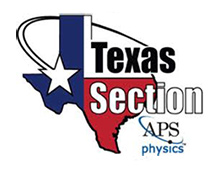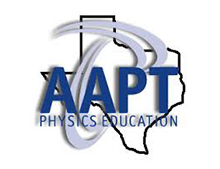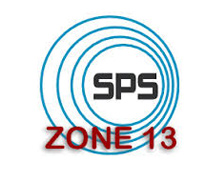
Joint Fall 2021 Meeting of the Texas Sections of APS, AAPT and SPS Zone 13
October 21-23, 2021
Hosted By University of Houston-Clear Lake
Co-organizers:
Texas Section of the American Association of Physics Teachers
Texas Section of the American Physical Society
Society of Physics Students Zone 13
This was a hybrid conference and participants had the option of attending virtually or physically.
Fall 2021 TSAPS Meeting Presentation Videos
Featured Speakers
Dr. Sylvester James Gates, Jr.
Sylvester James "Jim" Gates, Jr., (born December 15, 1950) is an American theoretical physicist. He received two B.S. degrees and a Ph.D. degree from the Massachusetts Institute of Technology, the latter in 1977. His doctoral thesis was the first one at MIT to deal with supersymmetry. In 2017, Gates retired from the University of Maryland, and is currently the Brown Theoretical Physics Center Director, Ford Foundation Professor of Physics, an Affiliate Mathematics Professor, and a Faculty Fellow, Watson Institute for International Studies & Public Affairs at Brown University.
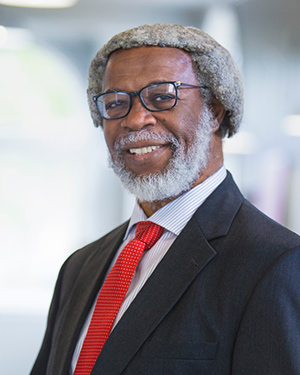
Read More About Dr. Sylvester James Gates, Jr.
While at the University of Maryland, College Park, Gates was a University System Regents Professor, the John S. Toll Professor of Physics, the Director of the String and Particle Theory Center, and Affiliate Professor of Mathematics. Gates served on the U.S. President’s Council of Advisors on Science and Technology, contemporaneously on the Maryland State Board of Education from 2009-2016, and the National Commission on Forensic Science from 2013-2016. He is known for his work on supersymmetry, supergravity, and superstring theory. In 1984, working with M.T. Grisaru, M. Rocek, W. Siegel, Gates co-authored Superspace, the first comprehensive book on the topic of supersymmetry. In 2017, working with Frank Blitzer and Stephen Jacob Sekula, he co-authored Reality in the Shadows (Or) What the Heck's the Higgs? In 2019, together with Cathie Pelletier, he co-authored Proving Einstein Right: The Daring Expeditions that Changed How We Look at the Universe.
In 2006, he completed a DVD series titled Superstring Theory: The DNA of Reality for The Teaching Company composed of 24 half-hour lectures to make the complexities of unification theory comprehensible to non-physicists. In 2012, he was named a University System of Maryland Regents Professor, only the sixth person so recognized in the system’s history. He is a past president of the National Society of Black Physicists, and is a NSBP Fellow, as well as a Fellow of the American Physical Society, the American Association for the Advancement of Science, and the Institute of Physics in the U.K. In 2019 he was elected to the presidential line of the APS where he is currently serving as President. He also is an elected member of the American Academy of Arts and Sciences, and the American Philosophical Society. In 2013, he was elected to the National Academy of Sciences, becoming the first African-American theoretical physicist so recognized in its 150-year history. On November 16, 2013, Prof. Gates was awarded the Mendel Medal by Villanova University "in recognition of his influential work in supersymmetry, supergravity and string theory, as well as his advocacy for science and science education in the United States and abroad." President Obama awarded Prof. Gates the 2011 National Medal of Science, the highest award given to scientists in the U.S., at a White House ceremony in 2013. During 2014, he was named the Harvard Foundation's "Scientist of the Year." In 2019, he was invited to serve on the American Bar Assoc Steering Committee for the Annual Prescription For Criminal Justice And Forensic Science. In 2020, he began serving on the Board of Trustees of the Mathematical Sciences Research Institute.
He continues to broadly engage video documentaries with appearances or cameos.
He currently continues his research in supersymmetry in systems of particles, fields, and strings.
Dr. Neal Lane
Dr. Neal Lane is the Senior Fellow in Science and Technology Policy at Rice University's Baker Institute for Public Policy and holds the titles of Malcolm Gillis University Professor emeritus and Professor of Physics and Astronomy emeritus at Rice University. Prior to returning to Rice University in January 2001, Dr. Lane served in the Bill Clinton Administration as Assistant to the President for Science and Technology and Director of the White House Office of Science and Technology Policy (1998-2001), and before that as Director of the National Science Foundation (1993-98).
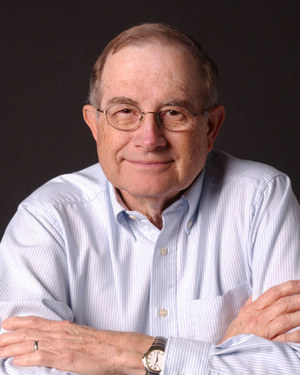
Read More About Dr. Neal Lane
Dr. Neal Lane was Rice's Provost and Professor of Physics prior to his time in Washington. He has also served as Chancellor of the University of Colorado at Colorado Springs (1984-86). He received his B.S. (1960), M.S. (1962) and PhD (1964) in physics from the University of Oklahoma.
Dr. Lee M. Morin
(M.D., Ph.D) (Captain, U.S. Navy, Ret.) NASA Astronaut
Dr. Lee M. Morin was selected as an astronaut in 1996. The New Hampshire native holds
several degrees including a Doctorate of Medicine and Microbiology from New York University.
The retired U.S. Navy Captain flew aboard STS-110 in 2002, which delivered the S0
(S-Zero) Truss; was the first time the station’s robotic arm was used for spacewalking;
and was the first time that a crew's spacewalks were based from the station's Quest
Airlock. Dr. Morin performed two spacewalks during STS-110 totaling 14 hours and 9
minutes. He is currently assigned to the Exploration Branch, where he works on the
Orion Multipurpose Crew Vehicle.
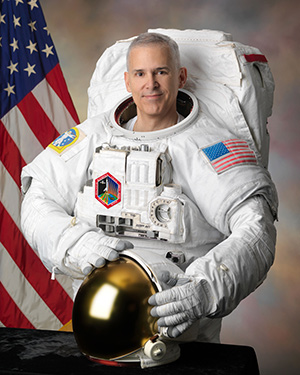
Read More About Dr. Lee M. Morin
Personal Data
Born on September 9, 1952 in Manchester, New Hampshire. Married with two children and four grandchildren. An amateur machinist, he also enjoys math and gardening.
Education
Graduated from the Western Reserve Academy, Hudson, Ohio, 1970; Bachelor of Science in Mathematical/Electrical Science, University of New Hampshire, 1974; Master of Science Degree in Biochemistry, New York University, 1978; Doctorate of Medicine and Microbiology, New York University, 1981 and 1982; Master of Public Health, University of Alabama at Birmingham, 1988; Master of Physics, University of Houston-Clear Lake, 2009.
Experience
After graduating from the University of New Hampshire in 1974, Morin worked at the Massachusetts Institute of Technology in the laboratory now known as the Media Lab. Morin matriculated at New York University School of Medicine in 1974, received a Master of Science in Biochemistry in 1978, an M.D. in 1981, and a Ph.D. in Microbiology in 1982. He then completed two years of residency training in General Surgery at the Bronx Municipal Hospital Center and at the Montefiore Hospital Medical Center in New York City.
In 1982, Dr. Morin received a Direct Commission in the Naval Reserve. In 1983, he entered active duty and attended the Naval Undersea Medical Institute in Groton, Connecticut. He was designated as an Undersea Medical Officer in 1983. Dr. Morin joined the crew of the USS HENRY M. JACKSON (SSBN-730) Pre-commissioning Unit at the Electric Boat Company Shipyards in Groton. He remained aboard as Medical Officer for both Blue and Gold crews until 1985 when the ship arrived at its home port in Bangor, Washington. During his tour aboard the USS HENRY M. JACKSON, Morin qualified as Diving Medical Officer, and also received his "Dolphins" as a qualified Submarine Medical Officer.
Morin then entered Flight Surgeon training at the Naval Aerospace Medical Institute (NAMI) in Pensacola, Florida. He received his "Wings of Gold" as a Naval Flight Surgeon in 1986, and remained on the staff at NAMI as Flight Surgeon/Diving Medal Officer until 1989. While at NAMI, he received his Masters of Public Health Degree from the University of Alabama at Birmingham. He then left active duty and entered private practice in occupational medicine in Jacksonville, Florida. He remained in the Naval Reserve, and drilled with the United State Marine Corps with the Third Force Reconnaissance Company in Mobile, Alabama.
In August 1990, he was recalled to active duty during Operation Desert Shield, when
he was assigned to Branch Clinic, Naval Air Station Pensacola as a Flight Surgeon.
Morin volunteered to reenter active duty, and was assigned to Administrative Support
Unit, Bahrain, as Diving Medical Officer/Flight Surgeon during Operation Desert Storm
and
during the post-war build-down period. In 1992, Morin rejoined the staff at NAMI,
initially as Special Projects Officer. He was named the Director of Warfare Specialty
Programs when NAMI became Naval Aerospace and Operational Medical Institute (NAOMI).
In 1995, Morin entered the Residency in Aerospace Medicine at the Naval Aerospace
and Operational
Medical Institute. He completed the residency in 1996.
NASA Experience
Selected as an astronaut candidate by NASA in April 1996, Morin reported to the Johnson Space Center in August 1996. Having completed two years of training and evaluation, he is qualified for flight assignment as a mission specialist. Dr. Morin was initially assigned technical duties in the Astronaut Office Computer Support Branch, followed by the Astronaut Office Advanced Vehicles Branch, and International Space Station training tasks in the Shuttle Operations Branch of the Astronaut Office. Morin served on the spacewalking (EVA) crew of STS-110 (2002) and has logged more than 259 hours in space, including over 14 spacewalk hours. After STS-110, he was appointed Deputy Assistant Secretary of State for Health, Space, and Science with the Department of State, Washington D.C. After this tour, he returned to the Astronaut Office at Johnson Space Center. He is currently assigned to the Exploration Branch, where he is working on the cockpit of NASA's newest spacecraft, the Orion Multipurpose Crew Vehicle. He is the supervisor of the Crew Interface Rapid Prototyping Lab (RPL).
Spaceflight Experience
STS-110 Atlantis (April 8 to April 19, 2002). This was the thirteenth shuttle mission to visit the International Space Station. Mission milestones included the delivery and installation of the S0 (S-Zero) Truss; the first time the station’s robotic arm was used to maneuver spacewalkers around the station; and the first time that all of a shuttle crew's spacewalks were based from the station's Quest Airlock. Morin performed two spacewalks totaling 14 hours and 9 minutes. The crew prepared the station for future spacewalks and spent a week in joint operations with the station's Expedition 4 crew. Mission duration was 10 days, 19 hours and 42 minutes.
Awards/Honors
Legion of Merit; Defense Meritorious Service Medal; Meritorious Service Medal; Navy Commendation Medal; Navy Achievement Medal; Navy Unit Commendation; Meritorious Unit Commendation (two awards); NASA Space Flight Medal; Overseas Service Ribbon; National Defense Medal; Liberation of Kuwait Medal; Southwest Asia Medal; Expert Pistol and Expert Rifle Medals.
Chairman of the Joint Chiefs of Staff Award for Excellence in Military Medicine, also known as the Fisher Award (1994); Innovations in American Government Award from the John F. Kennedy School of Government at Harvard University and Ford Foundation (1995 finalist); Sustaining Membership Lecture Award for the Association of Military Surgeons of the United States (1996).
Organizations
Aerospace Medical Association, Force Recon Association, American College of Preventive Medicine, Society of United States Naval Flight Surgeons.
Dr. Julianne Pollard-Larkin
Associate Professor of Medical Physics at the University of Texas, MD Anderson Cancer Center in Houston, TX
She is the Service Chief medical physicist in MD Anderson's Thoracic and GI Radiation Oncology Clinics. Dr. Pollard-Larkin also conducts clinical research and mentors and teaches Medical Physics residents and graduate students. Her primary research interests include pacemaker radiotherapy dose measurements and improving the efficacy of motion management in thoracic treatments and radiobiology. Julianne is also the Chair of the American Association of Physicists in Medicine (AAPM) Diversity and Inclusion Subcommittee.
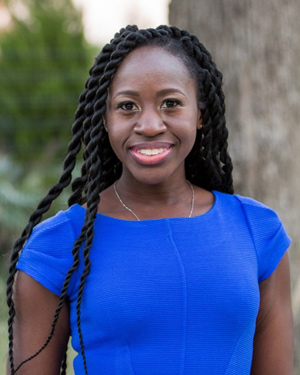
Read More About Dr. Julianne Pollard-Larkin
Dr. Pollard-Larkin received her PhD in Biomedical Physics at UCLA and her B.S. in Physics and Mathematics at the University of Miami in Coral Gables, Fl. After receiving her PhD at UCLA, Julianne was accepted into the Medical Physics Residency program at MD Anderson in Houston, TX. Following her residency, Julianne was hired by MD Anderson as faculty.
Beyond her role in the clinic and classroom, Julianne is a firm believer in outreach and increasing the pipeline of women and underrepresented populations in science. Ensuring that more underrepresented students and women follow in her footsteps is Julianne's passion.
Dr. Mark G. Raizen
Mark George Raizen is a physicist who conducts experiments on quantum optics and atom
optics.
Raizen was born in New York City where generations of his family resided since the
1840s. While he comes from a long line of medical doctors, dating back to the Civil
War, Raizen's life took a different path. In his childhood, Raizen was influenced
by his uncle, Dr. Robert F. Goldberger, former provost of Columbia University and
deputy director for science at the NIH, to pursue a scientific career.
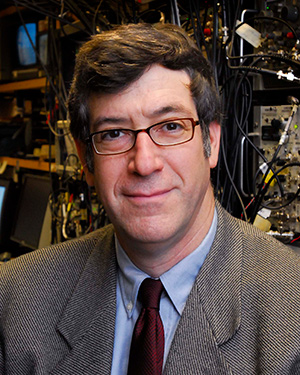
Read More About Dr. Mark G. Raizen
Like his mother, aunt, and uncle, Raizen attended The Walden School on the Upper West Side, until his family moved to Israel. He graduated from De Shalit High School and received his undergraduate degree in mathematics from Tel Aviv University in 1980. He continued his graduate education at the University of Texas at Austin, under the guidance of Steven Weinberg (Nobel Prize in Physics, 1979) and Jeff Kimble (California Institute of Technology).
Raizen completed his Ph.D. in 1989. From 1989 to 1991, Raizen was a National Research Council (NRC) post-doc at the Time and Frequency Division of the National Institute of Standards and Technology, working with David Wineland and James Bergquist.
Academic Career
In 1991, Raizen returned to Austin and The University of Texas where he became an assistant professor of physics. He was promoted to associate professor in 1996 and full professor in 2000. Raizen holds the Sid W. Richardson Foundation Regents Chair, one of only four such chairs in the physics department.
Scientific Career
Raizen started his scientific career in theoretical particle physics in 1984 with Steven Weinberg, his mentor. In 1985, Raizen moved into experimental physics where he began a close association with Jeff Kimble. In his graduate work, Raizen was instrumental in one of the first experiments that measured squeezed states of light and also observed, for the first time, the Vacuum Rabi splitting in the optical domain.
While at NIST, Raizen developed the first linear ion trap which has become the basis for quantum information with trapped ions.
At the University of Texas, Austin, the research program in the Raizen Group uses laser cooling and trapping of neutral atoms to study many fundamental problems. One of the most important results was the first direct observation of the quantum suppression of chaos.
In other experiments, Raizen and his group investigated quantum transport of atoms in an accelerating optical lattice. They studied the loss mechanism during the acceleration and determined that it is due to quantum tunneling. Surprisingly, for short times they found a deviation from the exponential decay law in the survival probability. This is a manifestation of a basic quantum effect predicted over forty years ago by Leonid Khalfin but not observed until now. This short-time deviation from exponential decay was then used to suppress or enhance the decay rate, effects known as the Quantum Zeno effect or Anti-Zeno effect.
In recent years the focus of the experimental research shifted towards many-body physics. Towards this goal, Raizen and his group built two experiments with Bose-Einstein Condensate in rubidium and sodium. They developed a unique system for the study and control of quantum statistics of atoms and quantum entanglement. The system includes a condensate in an optical box trap together with single atom detection.
Raizen pioneered a totally new approach to producing ultra-cold atoms by coherent slowing of supersonic beams. Using an atomic paddle, a slow monochromatic beam of ground state helium was produced. In a different approach, pulsed magnetic fields were used to stop paramagnetic atoms and molecules. To further cool these particles, Raizen and his collaborators introduced the concept of a one-way barrier, or one-way wall, which is used to accumulate atoms or molecules in an optical tweezer. This method was realized experimentally by the Raizen Group in December, 2007. This cooling method is an exact physical realization of informational cooling, originally proposed by Leo Szilard in 1929. This proposal used the concept of information entropy to resolve the paradox of Maxwell's Demon. Together, these methods enable the trapping and cooling of ultra-cold atoms that span most of the periodic table and many molecules.
In 2009, Raizen and his group built an experiment to study Brownian motion of a bead of glass held in optical tweezers in air. In 1907, Albert Einstein published a paper in which he considered the instantaneous velocity of Brownian motion, and showed that it could be used to test the Equipartition Theorem, one of the basic tenets of statistical mechanics. In this paper, Einstein concluded that the instantaneous velocity would be impossible to measure in practice due to the very rapid randomization of the motion. In the spring of 2010, the Raizen Group measured the instantaneous velocity of a Brownian particle, over 100 years since the original prediction by Einstein. The velocity data was used to verify the Maxwell-Boltzmann velocity distribution, and the equipartition theorem for a Brownian particle.
In January, 2010, Raizen introduced a new field which he pioneered and named Atomoscience. This is the science of building complexity from the bottom up, enabled by the general methods of controlling atoms in gas phase. Two examples of applications in Atomoscience are efficient isotope separation for medicine and basic research, and magnetic focusing of supersonic beams to create nanoscale structures.
Personal Life
Raizen is married and resides in Austin and San Antonio, Texas with his numerous rescue dogs and cats. He is an advocate for historical preservation and animal rights.
Dr. Fernando Quevedo Rodríguez
Fernando Quevedo Rodríguez is a Guatemalan physicist. He was appointed director of the Abdus Salam International Centre for Theoretical Physics (ICTP) in October 2009; he succeeded K. R. Sreenivasan, who was the director since 2003.
Read More About Dr. Fernando Quevedo Rodríguez
He was born in 1956 in Costa Rica and obtained his early education in Guatemala. He obtained his Ph.D. from the University of Texas at Austin in 1986 under the supervision of Nobel laureate Steven Weinberg. Following a string of research appointments at CERN, Switzerland, McGill University in Canada, Institut de Physique in Neuchatel, Switzerland, and the Los Alamos National Laboratory, USA, as well as a brief term as professor of physics at the National Autonomous University of Mexico (UNAM). Dr. Quevedo later joined the Department of Applied Mathematics and Theoretical Physics at the University of Cambridge, UK, in 1998, where he has been Professor of Theoretical Physics and Fellow of Gonville and Caius College.
He has been awarded the Royal Society Wolfson Research Merit Award, Doctorate Honoris Causa from Universidad de San Carlos de Guatemala and Universidad del Valle de Guatemala, John Solomon Guggenheim Foundation Fellowship and, alongside Anamaría Font, won the 1998 ICTP Prize. He has authored more than 100 papers.
He has taught courses on differential equations, complex methods, supersymmetry and extra dimensions. He has discussed the importance of international research institutions for science diplomacy.
Dr. Paul R. Shapiro
Paul R. Shapiro, the Frank N. Edmonds, Jr., Regents Professor in Astronomy at The University of Texas at Austin, has been elected to a four-year term to the Chair line of the Division of Astrophysics of the American Physical Society.
The American Physical Society (APS) is the principal professional society in physics in North America. Its Division of Astrophysics represents more than 2,400 scientists working in many fields of astrophysics and cosmology. APS division chairs are chosen through votes of all division members. Members elected to the Chair line progress through the top offices in the division. Shapiro will serve as Vice Chair in 2013-2014, Chair-Elect in 2014-2015, Chair in 2015-2016, and Chair Emeritus in 2016-2017.
Read More About Dr. Paul R. Shapiro
Shapiro was elected a Fellow of the APS in 2011. His citation reads:
"For outstanding contributions to astrophysics and cosmology which advanced our understanding of cosmic reionization, structure formation, gas dynamics, dark matter and dark energy, the interstellar and intergalactic media, and topics from supernova polarization to relativistic shocks."
Shapiro graduated from Harvard with an Astronomy A.B. (Summa Cum Laude, 1974) and Ph.D. (1979). He held a post-doctoral appointment at Princeton’s Institute for Advanced Study (1978 - 1980) before joining The University of Texas at Austin’s astronomy faculty in 1981. At UT, he is also a member of the Physics Department’s Graduate Studies Committee and a founding member of the Texas Cosmology Center.
With about 200 published papers in theoretical astrophysics, Shapiro has served as principal investigator on numerous NASA, National Science Foundation (NSF), and Department of Energy grants.
He has received numerous awards, including an Alfred P. Sloan Research Fellowship in Physics (1984-1988), UT’s Astronomy Teaching Excellence Award (1988), the National Chair of Excellence from the Universidad Nacional Autónoma de México (1997), UT’s John W. Cox Fellowship for Advanced Study in Astronomy (2004-2006), and the NSF TeraGrid '08 Award for pioneering massively-paralleled supercomputer simulation of cosmic reionization.
Shapiro says his latest research focuses on three major questions: How did the first stars and galaxies reionize the universe in the first billion years after the Big Bang? What can observable consequences of this "epoch of reionization" tell us about cosmology? What is the nature of cosmic dark matter?
Contact Information
Porcha Stampley
stampley@uhcl.edu
College of Science and Engineering
University of Houston-Clear Lake
Sponsors
